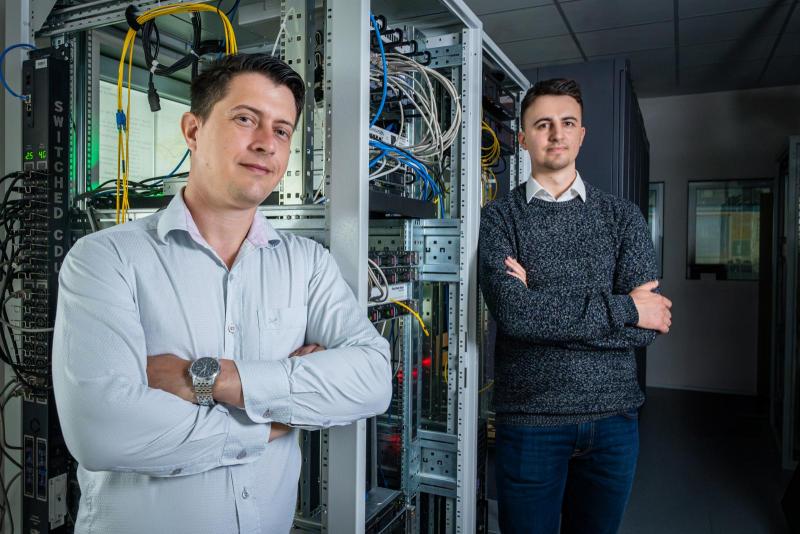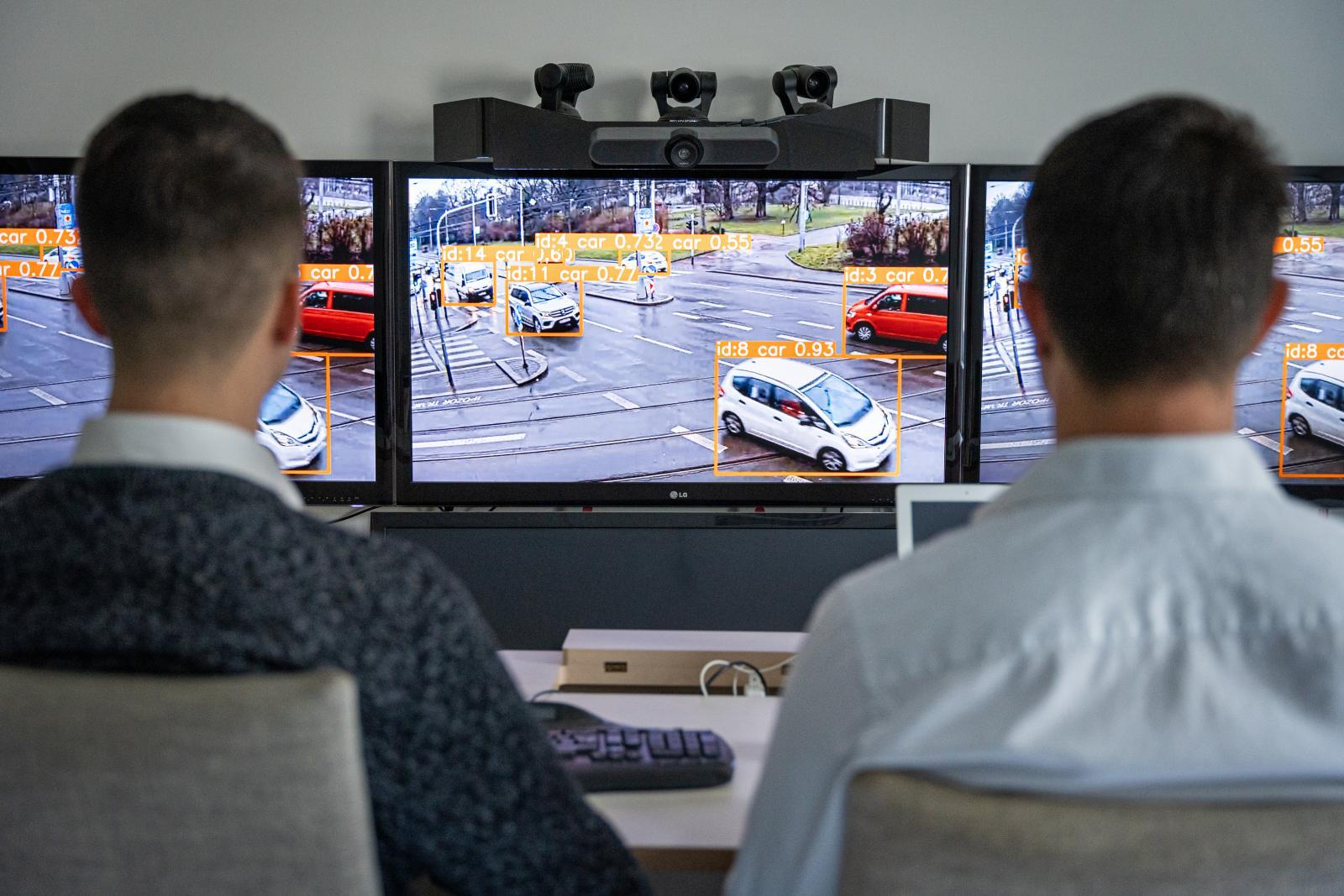Ideas and discoveries
11 June 2024
Scientists from FEEC BUT are participating in the development of a smart intersection. This could make transport more efficient and ensure greater safety

The use of artificial intelligence in traffic management is being addressed by a project in which Radim Burget's team from the Institute of Telecommunications FEEC BUT also participates. Together with several partners, they are evaluating data obtained from cameras located at the intersection of Milady Horákové and Koliště streets in Brno. Using a 3D model, it can simulate different conditions in the intersection and train the system to predict impending collisions. In the future, "smart intersections" could be able to warn drivers in time of possible danger and at the same time help the flow of traffic.
Scientists from FEEC BUT are investigating whether it is possible to create affordable software that will be able to reliably predict road hazards and impending accidents. As part of the three-year TAČR project, together with Yunex, Brno Communications and the Faculty of Transport of the Czech Technical University, they are monitoring what is happening at a selected intersection in Brno, and are working on software that can predict potential traffic collisions.
"Not all accidents can be predicted. Some are preceded by a very short time when it is possible to guess what will happen. But there are situations in which it is already recognizable quite a long time in advance what is happening. For example, a cyclist is riding on the main road, a car is approaching on the secondary road and it is obvious that the car did not notice the cyclist," Radim Burget describes the model situation.
While now we can only hope that the driver will notice the cyclist in time and react, in the future he could receive a warning precisely thanks to the system in which the team from FEEC BUT participates. "Our project looks to the future. There are already protocols that allow the intersection to communicate with the car. In the future, for example, the system could send a message to the control unit of a moving vehicle. In theory, it would be possible to modify the signaling as well, but it seems that this solution will not be the way forward. Because before the driver would have run a red light that would have forced him to stop, it would have been too late," adds Burget.

What the BUT team is working on is a system using artificial intelligence that would be able to recognize what is happening at the intersection from the available data. In the future, it should also be able to combine multiple camera systems into one model, a so-called digital twin. "Our third goal is to test a wide range of sensors that could be used for these purposes. So that we are able to create a 3D model using various sensors and thus bring additional information," says Radim Burget.
They are also working on the 3D model because, although the chosen intersection is very exposed, there are not as many traffic accidents as the researchers would like. "There are not many accidents. Fortunately for humanity, but unfortunately for the project," confirms Burget. Doctoral student Štěpán Ježek is therefore working on modeling a real intersection. Subsequently, in this model, he can simulate various situations. "The advantage is that we can create a number of similar variants with minor differences from one accident that occurred. We can place the cameras differently. We can do a simulation using other lighting or climatic conditions. That is, to create darkness, add rain and the like. Simply put, we simulate a wide range of scenarios in the virtual plane that could occur, but did not occur in reality. Thanks to this, we can refine our system and its estimate, but no one loses their life and no damage is caused," adds Štěpán Ježek.
They then verify how accurate their simulations and estimates are on real data from the intersection. However, people don't have to worry about researchers recording their cars or faces. "We do not use any algorithms that would identify, for example, license plates or recognize faces. Due to the GDPR, this is not even possible," confirms Radim Burget.
The project should end next winter. Nevertheless, researchers are already debating other paths that follow-up research could take. One area they may be exploring in the future is transportation systems using artificial intelligence to streamline transportation throughout the city. "This is not the goal of this particular project, but together with the main solver, the company Yunex, we are already discussing the possibility of managing intersections in such a way that there is maximum throughput throughout the city. In this way, the intersections would be synchronized in some way," concludes Radim Burget.
(zeh)
Greater efficiency and completely new applications. Experts from FEEC BUT also collaborate on satellites for very low orbit
Antibiotic resistance in the poultry microbiome is investigated by FEEC BUT
Scientists from FEEC BUT have developed a bracelet that warns of the risk of Parkinson ’s disease
Optical fibres will help peek into the deepest parts of the brain. A doctoral student from FME is involved in the research
Swarm of unmanned drones with ground robots to help army survey hazardous areas